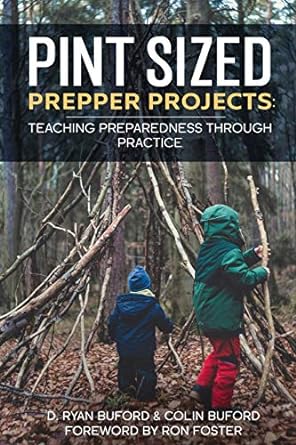[ARTICLE]: Elements of Survival 4: The Five W's of Survival
My background in the martial arts, as a matter of fact, is under Sifu Rick Faye, of the Minnesota Kali Group (www.MNKali.com), and his instructor Guro Dan Inosanto, who is one of three people authorized by the late Bruce Lee to propagate the martial-philosophy of Jeet-Kune-Do and Jun-Fan Gung-fu, which has a core tenant that goes, "Absorb what is useful, discard what is useless...and add what is specifically your own...". What that means to me is every source can be a resource of learning and additional knowledge. I have many different instructors of various [martial] arts that influenced my interpretation of the martial arts.
It is the same in the preparedness/survival realm. I have many sources and instructors that I draw information and learning from. I like watching "quality" survival shows, I find them inspiring, and I can always catch something that I find useful...and of course since these shows are for TV entertainment a lot gets discarded as well. The famous Survivorman, Les Stroud has introduced another element of survival to add to the mental toolbox, and that is the Five W's of Survival.[2] They are:
- Weather
- Wood
- Water
- Widow-makers
- Wigglies
These five "W"-prefixed reminders are especially essential to keep in mind when trying to decide on the best place to build a shelter or stay-put for the night. He recited these in the first season of his TV series, episode 7, Canyonlands. I found this a very useful and enlightening list to keep in mind, not only when trying to decide upon a place to bed down, but also when enroute to a destination, or just wandering on walkabout. This list of W-words is useful in assessing the chances of one's survival in a 'situation'.
I will attempt to briefly define each one of these concepts through my own experience base. However, there are also other useful sites that talk about the Five W's as well. I feel it is always good to do some additional research and see what others have to say on this topic.
Weather
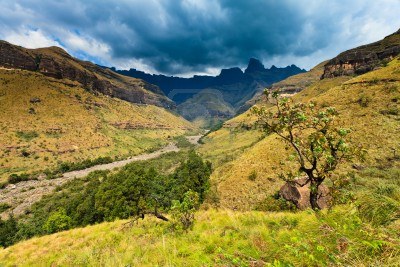 What does the weather look like? Again, the number one cause of death in the outdoors is from exposure, usually from cold, wet and/or windy weather.[3]
What does the weather look like? Again, the number one cause of death in the outdoors is from exposure, usually from cold, wet and/or windy weather.[3]
Get to know the signs of weather and its patterns. Ask yourself, "Is it going to rain or thunders storm? Are there high winds, hurricane, tornado, blizzard conditions? Is there a sand storm on the horizon? Is there a high pressure system [so it will be dry and hot conditions]?" Also, don't make yourself a target for lightning if it could be around, stay away from big metal objects and off the tops of hills and mountains.
Knowledge of likely weather will help determine what sort of shelter you will need, if any at all.
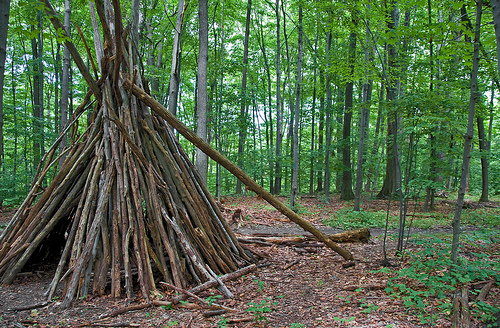 Wood
Wood
As it relates to The Sacred Order – Shelter, Fire, Water...wood is up there on this list. Essentially, this can translate to building material and/or fuel, which could also include, grasses, or snow. As an example, in a woodland scenario, wood can be a primarily essential component for cover or making shelter the first in The Order. It is first because the NUMBER ONE cause of death in the outdoors is from exposure. [3]
Making fire, the second in line of The Sacred Order, is the tool of tools and cannot be under-stated in a survival situation. John Young of Wilderness Awareness School cites that good scouts know their trees. The ability to make tools like weapons (bows/arrows, spears, blowguns, etc...), trap-parts, cordage, containers, utensils, or even a raft or canoe, not only determines whether one will survive or not, but is key to the notion of thriving in a survival situation.
 Water
Water
The third, but a very important element of The Sacred Order, is water. Remembering the Rule of Three, humans [generally] can only survive without potable water for 3 days. A key question to ask when looking for a route of travel or a place to bed down is, "Am I near a lake, river, creek, stream, or other clean water source?
Water sources are also places where, due to ecological circumstances, an abundance of wildlife, edible, and medicinal plants can be found. That being said, water sources also tend to draw other potentially dangerous animals to drink or feed (eg. bear, wolves, alligators, snakes, etc...). So stay alert around water sources.
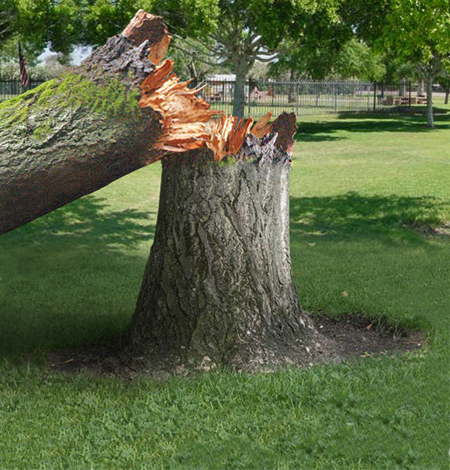 Widow-makers
Widow-makers
Is the route you choose to travel, or the place where you intend to set up camp should be safe from dangers, such as large or tall dead trees that can fall on top of you, or hanging rocks or boulders that can slip loose and cause avalanches or landslides. Are there sudden drop offs or cliffs, flash-floods, sink-holes, quicksand or mud?
These are a few of the dangers that could be-fall the careless or unwary hiker or camper. Know your terrain. Travel slowly, and cautiously.
Wigglies
Willies generally refer to any critters that could be problematic, especially snakes and other poisonous creatures, though I would include all dangerous or troublesome animals in this category for completeness such as: snakes, bees, hornets, bats, ants, mosquitoes, ticks, crocodilians, big cats, bears, other predators and more... as cited above under Water. Again sources of water draw all sorts of animals many are accessible for food, others will try to make food of you.
The fifth W means to ask yourself, "Are there other organisms about that can do me harm? Am I bedding down on top of a badger or wolverine's den? Or am I disturbing a hiding place for a bunch of brown recluses, black widows or scorpions." It is very important to know not only poisonous plants in the area but dangerous creatures that you might encounter in any given region, and where they reside.
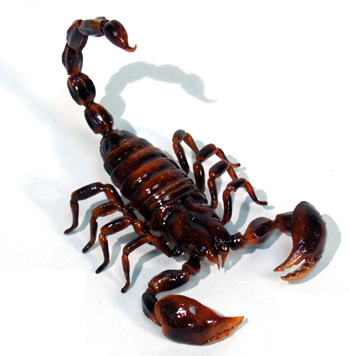 Insure your camp is protected from them as best as possible. Make a raised platform in places where creatures like snakes and ants roam the ground, such as a jungle. Don't make your camp in places that look like good snake habitats, such as places with holes in the earth or intricate rocky or root-covered ledges.
Insure your camp is protected from them as best as possible. Make a raised platform in places where creatures like snakes and ants roam the ground, such as a jungle. Don't make your camp in places that look like good snake habitats, such as places with holes in the earth or intricate rocky or root-covered ledges.
Furthermore, some bugs and creepy crawlers will be more of a nuisance than dangerous, but even this can become dangerous if they prevent you from getting good sleep or lower your morale. We want to be as comfortable in the bush as possible. A good fire will usually keep away these pesky insects. Some insects can actually be dangerous, like ants and disease carrying mosquitoes.
In locations where large predators could be around, have a weapon at your side just in case, like a large spear carved out of wood, or tie your knife to a long thick stick. Build your camp with only one opening so if a predator comes around you will not be surprised from behind. "Camp security" comes into play where truly dangerous animals could be around like lions and jaguars, but that is a whole nother subject unto itself. But of course, ALWAYS have a fire![3]
Citations:
1), Survivorman > Season 1 > Episode 7 > Canyonlands >> www.lesstroud.ca/survivorman/episodes.php#s1e7
2). Surviving in the Canyon-lands of Utah >>
www.infolific.com/leisure/wilderness-survival/surviving-in-the-canyonlands-of-utah/
3). Five W's Shelter Checklist >> www.bushcraftspirit.com/fivews.php

